#iot ecosystem enablement
Explore tagged Tumblr posts
Text
Live stream happened, and we got some designs revealed! As well as a couple of information, but not anything major.

Miss conductor, not much of a surprise (but miss girl looks gorgeous as always)

And Node, who is sort of the main antagonist.
I made a prediction before, and April 21 hit,.. so I believe it is well due for an update by now.
While we did not receive nearly as much information as we were anticipating, a design still reveals much on the character itself when going through the lens of a general analysis. In this context, their abilities and name aid significantly in the status and essential depths of their character.
With what I can gather in my research, nodes play an important role in networking because they are the building blocks of a network, precisely the gateway for connection, direction, sending, creating, receiving, and storing data. It requires only software to connect to the network, and it can be run by completely anyone. Applying this knowledge with concept arts of the game and overall worldbuilding of the series itself—everything becomes a lot clearer.
So now, how can we apply this to Node?

Node's name is simple in itself, and it connects to their design as well. They are quite literally made up of nodes. One in their head and the other in their limbs. Their body is translucent.
Network nodes are categorical. Thanks to DJ, we got a helpful hint that incredibly reduced their types to a digestible and simpler layout.
Their name starts with i.
There are countless forms and types of nodes, the hint condensed it down to 2 answers, both starting with the letter “i”
Intermediate nodes
These include devices like routers and switches that help direct data to the correct destination while also receiving it. They don't originate or terminate data but instead pass it along to where it needs to go.
IoT nodes
loT (Internet of Things) Nodes serve as devices that establish connectivity to the Internet via a gateway, effectively enabling the integration of the physical world into the vast realm of the Internet. Within an loT ecosystem, these nodes function as crucial components for bridging the gap between the physical and virtual worlds. Taking charge of managing the entire loT system.
We had seen this ability before vía King's icons' staff, in which it only sucked in Minecraft mobs due to the strong force being their obligatory origin, overriding the game itself due to the overlapping icons.
In regards to King, he used this ability for the very destruction of the game itself, down to the code, reducing it to nothing but.. nothing for the sake of vengeance. Or at least what would have occurred if he did succeed.
way to go CG! Give credit where it's due
Despite this being marked with the intention of erasion and minimization, I think it's safe to group this as receiving and storing data. The two icons combined created a horrifically dramatized version of the force with storing and receiving, which created an incredibly overpowered demolishing force.

In Chosen, we had seen this ability before as well, as the constellations are seen right as he creates the gateway from the Outernet, which sounds awfully familiar. This is what you would refer to as an "extension to the digital world"
I think I can be able to safely group this to direction and creation.

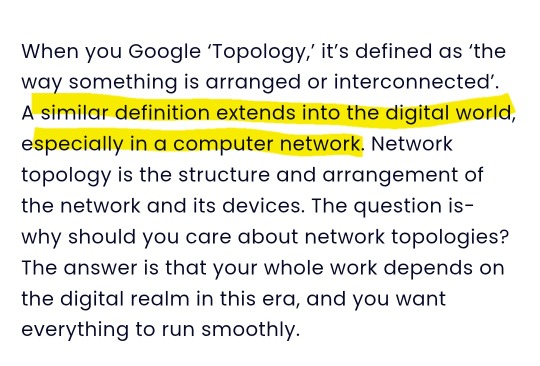
From how I see it, it seems as though it's quite diverse in a fictional worldbuilding sense within characters.
And obviously, it won't be the last time we would see it. It seems as though we would be exploring this quite a lot.


In their cameo, Node is in an assumed line-up with all the major series antagonists.

But if you’re asking me, it seems as though our iconic antagonists appear to be rather victims of Node. Menacingly behind them, their abilities floating not far behind as they're stuck in a swampy substance. But that's just me.
Node's entire antagonistic ordeal is beyond my grasp, but I'm assuming their abilities and attacks surrounds the embodiment of network topology, which would mold and diverse into the connections of nodes. They possibly intend to screw up with the gateways that are responsible for the receiving, directing, and sending of data between various devices through communication links that are defined as network—with the basic visuals of concept art we were given.

(The gateway, ethernet tunnels, the train cough cough)
Node's goal and story behind that destruction remains anonymous, as the writing is still in early development. Regardless, food for thought.
#alan becker#animation vs minecraft#animator vs animation#animation versus#nerd voyage#it's pretty interesting#though my research is still ongoing#when i say it's diverse..#yeah it's diverse alright
88 notes
·
View notes
Text
Top Data Science Trends Reshaping the Industry in 2025
Hyderabad has emerged as a powerhouse for technology and analytics, with its IT corridors in HITEC City and Gachibowli housing multinational corporations, fintech firms, and health-tech startups. As 2025 unfolds, data science continues to transform how organizations in Hyderabad operate, enabling smarter decision-making, process optimization, and innovation across sectors.
With the exponential growth of data, advancements in artificial intelligence, and increasing adoption of automation, the landscape of data science is evolving rapidly. Understanding the latest trends in this field is crucial for professionals, businesses, and students in Hyderabad who want to remain relevant in a competitive market while leveraging data to create tangible value.
This article explores the top data science trends reshaping the industry in 2025, with a practical lens on their applications, implications, and opportunities within Hyderabad’s thriving ecosystem.
Looking forward to becoming a Data Science? Check out the data science in hyderabad
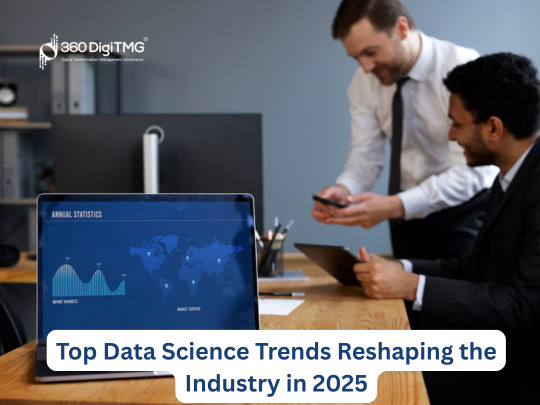
1. Generative AI Integration in Business Analytics
Generative AI is no longer limited to experimental labs; it is now being integrated into business workflows across Hyderabad. Companies are adopting generative AI models for creating realistic synthetic data to enhance model training while maintaining data privacy. This is especially beneficial for healthcare and fintech startups working with sensitive information.
Generative AI is also aiding in content generation, automated report creation, and code generation, reducing repetitive tasks for data scientists and analysts. Hyderabad’s enterprises are exploring these tools to improve productivity and accelerate project timelines without compromising quality.
2. Democratization of Data Science
In 2025, there is a clear movement towards democratizing data science within organizations. No longer restricted to specialized data teams, data-driven decision-making is being embedded across departments, empowering business analysts, product managers, and marketing professionals to work with data effectively.
In Hyderabad, many organizations are investing in low-code and no-code data science platforms, enabling teams to build predictive models, generate dashboards, and perform advanced analytics without writing complex code. This democratization ensures data literacy within organizations, fostering a culture of informed decision-making and reducing dependency on small data science teams for routine analysis.
3. Increased Focus on Responsible AI and Ethical Data Use
With the increasing adoption of AI models, concerns regarding data privacy, fairness, and transparency have become prominent. Hyderabad, with its large IT and data-driven organizations, is aligning with global best practices by implementing responsible AI frameworks.
In 2025, organizations are prioritizing explainable AI models to ensure stakeholders understand how decisions are made by algorithms. Regular audits for bias detection and implementing governance frameworks around data usage have become standard practices, especially within sectors like healthcare, finance, and education in Hyderabad.
4. The Rise of Edge AI and Real-Time Analytics
Edge computing, where data processing occurs closer to the data source rather than in centralized servers, is transforming real-time analytics. Hyderabad’s manufacturing firms and IoT startups are leveraging edge AI to process data from sensors and devices instantly, enabling faster decision-making and reducing latency.
This trend is particularly significant for applications such as predictive maintenance in manufacturing, traffic management in smart city projects, and healthcare monitoring systems, where real-time decisions can lead to significant operational improvements.
5. Cloud-Native Data Science Workflows
The adoption of cloud platforms for data storage, processing, and analytics continues to accelerate in 2025. Organizations in Hyderabad are transitioning to cloud-native data science workflows using platforms like AWS, Azure, and Google Cloud to handle large-scale data processing and collaborative analytics.
Cloud-native workflows enable seamless scaling, collaborative model building, and integration with business applications, supporting the growing data needs of enterprises. This shift also allows data science teams to experiment faster, deploy models into production efficiently, and reduce infrastructure management overhead.
6. Emphasis on Data Privacy and Security
As organizations handle increasing volumes of personal and sensitive data, ensuring privacy and security has become paramount. In Hyderabad, where fintech and healthcare industries are expanding rapidly, data encryption, anonymization, and compliance with global data protection standards like GDPR have become critical parts of data workflows.
Organizations are implementing privacy-preserving machine learning techniques, such as federated learning, to train models without compromising user data privacy. This trend is essential to build customer trust and align with regulatory standards while leveraging data for analytics and AI initiatives.
7. Automated Machine Learning (AutoML) Adoption
AutoML tools are revolutionizing the data science workflow by automating the process of feature engineering, model selection, and hyperparameter tuning. This reduces the time data scientists spend on repetitive tasks, enabling them to focus on problem framing and interpretation of results.
In Hyderabad, startups and enterprises are increasingly adopting AutoML solutions to empower smaller teams to build and deploy models efficiently, even with limited advanced coding expertise. This trend is also aligned with the growing demand for faster delivery of data science projects in a competitive market.
8. Growth of Natural Language Processing Applications
Natural Language Processing (NLP) continues to be a significant area of innovation in data science, and in 2025, it has become integral to many business processes in Hyderabad. Organizations are using NLP for customer service automation, sentiment analysis, and extracting insights from unstructured text data like customer reviews, social media posts, and support tickets.
Advancements in multilingual NLP models are particularly relevant in Hyderabad, a city with a diverse linguistic landscape, enabling businesses to interact with customers in regional languages while understanding customer sentiments and needs effectively.
9. Data-Driven Personalization in Customer Engagement
Businesses in Hyderabad are leveraging data science to drive personalized customer experiences. By analysing customer behaviour, transaction history, and interaction patterns, companies can design targeted marketing campaigns, personalized recommendations, and customized services to enhance customer satisfaction.
In sectors such as e-commerce, banking, and healthcare, data-driven personalization is helping businesses improve engagement, increase customer retention, and drive revenue growth in a competitive market.
10. Hybrid Roles: Data Science Meets Domain Expertise
As data science becomes more integrated into business processes, there is a growing demand for professionals who combine domain expertise with data analysis skills. In Hyderabad, this trend is evident in sectors like healthcare, finance, and supply chain, where professionals with knowledge of the domain and data science can drive more meaningful and actionable insights.
These hybrid roles, often described as analytics translators or domain-data science specialists, are essential for ensuring data-driven projects align with business objectives and deliver tangible value.
Learning and Upskilling in Hyderabad
To remain competitive in the evolving data science landscape, continuous learning and upskilling are essential. In Hyderabad, 360DigiTMG offers specialized programs in data science, machine learning, and AI that align with the latest industry trends. These programs combine theoretical understanding with practical application, ensuring learners gain hands-on experience with the tools and techniques currently shaping the industry.
360DigiTMG’s training modules include projects based on real-world datasets relevant to Hyderabad’s ecosystem, such as healthcare analytics, retail sales optimization, and financial data modelling, helping learners build practical skills and a strong portfolio to advance their careers in data science.
The Road Ahead for Data Science in Hyderabad
As Hyderabad continues to grow as a technology and innovation hub, data science will remain a key driver of business transformation. The trends shaping 2025 are a reflection of how organizations are adapting to technological advancements, regulatory environments, and the demand for personalized, data-driven services.
For professionals in Hyderabad, aligning skills with these trends will open opportunities across industries, from AI development and advanced analytics to data-driven strategy and process optimization. For businesses, staying updated with these trends ensures competitiveness and resilience in a rapidly changing market.
youtube
Conclusion
The data science landscape in 2025
is defined by technological advancements, democratization, and an increased focus on responsible and ethical AI practices. In Hyderabad, these trends are being actively adopted by organizations across sectors, reshaping workflows, driving innovation, and enhancing customer experiences.
By understanding and aligning with these top data science trends, professionals and organizations in Hyderabad can position themselves to harness the full potential of data, driving growth and maintaining relevance in an increasingly data-driven world.
Navigate To:
360DigiTMG — Data Analytics, Data Science Course Training Hyderabad
3rd floor, Vijaya towers, 2–56/2/19, Rd no:19, near Meridian school, Ayyappa Society, Chanda Naik Nagar, Madhapur, Hyderabad, Telangana 500081
Phone: 9989994319
Email: [email protected]
2 notes
·
View notes
Text
MeshTek’s Vision: Empowering IoT with Bluetooth Mesh Networking
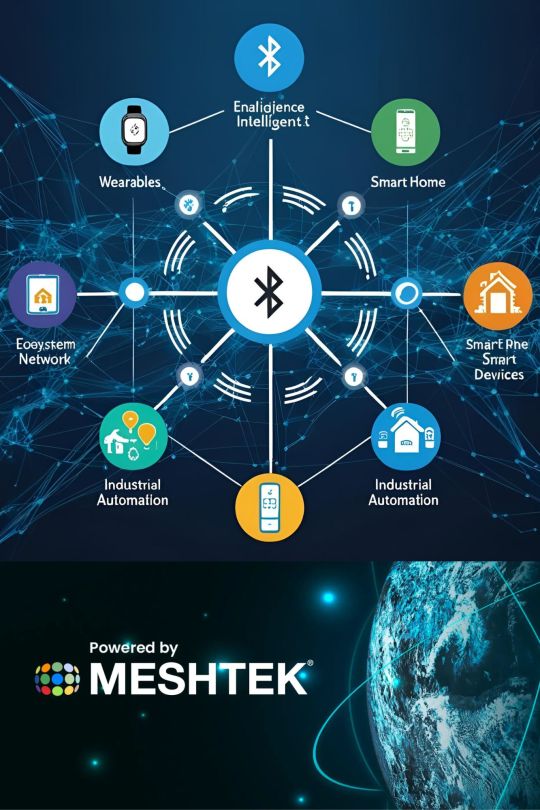
MeshTek’s robust Bluetooth Mesh Networking ecosystem—seamlessly linking smart homes, wearables, industrial automation, and connected devices into one intelligent grid. It illustrates how MeshTek empowers secure, low-energy, and scalable communication across complex environments, enabling real-time control, optimized performance, and unmatched flexibility. Built to support everything from smart devices to enterprise-level automation, MeshTek’s platform is at the heart of next-gen IoT transformation.
#Bluetooth Mesh Networking#MeshTek#smart automation#connected devices#industrial IoT#IoT ecosystem#smart home network#IoT infrastructure#wearable integration#scalable IoT platform#low-energy communication#real-time control#IoT app development#MeshTek technology#intelligent automation
2 notes
·
View notes
Text
Cloud Migration and Integration A Strategic Shift Toward Scalable Infrastructure
In today’s digital-first business environment, cloud computing is no longer just a technology trend—it’s a foundational element of enterprise strategy. As organizations seek greater agility, scalability, and cost-efficiency, cloud migration and integration have emerged as critical initiatives. However, transitioning to the cloud is far from a lift-and-shift process; it requires thoughtful planning, seamless integration, and a clear understanding of long-term business objectives.

What is Cloud Migration and Why Does It Matter
Cloud migration involves moving data, applications, and IT processes from on-premises infrastructure or legacy systems to cloud-based environments. These environments can be public, private, or hybrid, depending on the organization’s needs. While the move offers benefits such as cost reduction, improved performance, and on-demand scalability, the true value lies in enabling innovation through flexible technology infrastructure.
But migration is only the first step. Cloud integration—the process of configuring applications and systems to work cohesively within the cloud—is equally essential. Without integration, businesses may face operational silos, inconsistent data flows, and reduced productivity, undermining the very purpose of migration.
Key Considerations in Cloud Migration
A successful cloud migration depends on more than just transferring workloads. It involves analyzing current infrastructure, defining the desired end state, and selecting the right cloud model and service providers. Critical factors include:
Application suitability: Not all applications are cloud-ready. Some legacy systems may need reengineering or replacement.
Data governance: Moving sensitive data to the cloud demands a strong focus on compliance, encryption, and access controls.
Downtime management: Minimizing disruption during the migration process is essential for business continuity.
Security architecture: Ensuring that cloud environments are resilient against threats is a non-negotiable part of migration planning.
Integration for a Unified Ecosystem
Once in the cloud, seamless integration becomes the linchpin for realizing operational efficiency. Organizations must ensure that their applications, databases, and platforms communicate efficiently in real time. This includes integrating APIs, aligning with enterprise resource planning (ERP) systems, and enabling data exchange across multiple cloud platforms.
Hybrid and Multi-Cloud Strategies
Cloud strategies have evolved beyond single-provider solutions. Many organizations now adopt hybrid (combining on-premise and cloud infrastructure) or multi-cloud (using services from multiple cloud providers) approaches. While this enhances flexibility and avoids vendor lock-in, it adds complexity to integration and governance.
To address this, organizations need a unified approach to infrastructure orchestration, monitoring, and automation. Strong integration frameworks and middleware platforms become essential in stitching together a cohesive IT ecosystem.
Long-Term Value of Cloud Transformation
Cloud migration and integration are not one-time projects—they are ongoing transformations. As business needs evolve, cloud infrastructure must adapt through continuous optimization, cost management, and performance tuning.
Moreover, integrated cloud environments serve as the foundation for emerging technologies like artificial intelligence, data analytics, and Internet of Things (IoT), enabling businesses to innovate faster and more efficiently.
By treating cloud migration and integration as strategic investments rather than tactical moves, organizations position themselves to stay competitive, agile, and future-ready.
#CloudMigration#CloudIntegration#DigitalTransformation#HybridCloud#MultiCloud#CloudComputing#InfrastructureModernization#ITStrategy#BusinessContinuity
2 notes
·
View notes
Text
What is a Foundry? Why It’s the Key to Chip Manufacturing

In the heart of the global electronics industry lies a quiet giant—the semiconductor foundry. While companies like Apple, NVIDIA, and Qualcomm design the chips that power your favorite devices, it's the foundries that physically bring those designs to life. But what exactly is a foundry, and why is it so critical to chip manufacturing?
What is a Semiconductor Foundry?
A semiconductor foundry, or simply "foundry," is a manufacturing facility that fabricates integrated circuits (ICs). These ICs, also known as microchips or chips, are the brains behind modern electronics—everything from smartphones and laptops to cars and industrial machinery.
Foundries specialize in manufacturing chips designed by other companies, a business model known as pure-play foundry. For example, TSMC (Taiwan Semiconductor Manufacturing Company) is the world’s largest and most advanced foundry, producing chips for tech giants without competing with them in design.
There are also IDMs (Integrated Device Manufacturers) like Intel, which both design and manufacture their own chips. However, the pure-play foundry model has become dominant due to the increasing complexity and cost of chip manufacturing.
The Role of a Foundry in Chip Manufacturing
Chip design is only half the equation. Once a design is finalized using software and simulations, it must be turned into physical silicon wafers through a meticulous and highly precise process involving:
Photolithography: Transferring microscopic circuit patterns onto silicon.
Etching and Deposition: Carving and layering materials to form transistors and interconnects.
Ion Implantation: Modifying electrical properties at the atomic level.
Packaging and Testing: Encasing chips and validating their performance.
This process takes place in ultra-clean, billion-dollar facilities where even a speck of dust can ruin a chip. Foundries provide the scale, expertise, and cleanroom environments necessary to execute this complex task at nanometer precision.
Why Foundries Are the Key to the Chip Industry
Enabling Innovation Through Specialization Foundries allow fabless companies (those that only design chips) to focus on innovation without the burden of operating expensive fabrication plants. This division of labor has accelerated technological progress.
Advanced Process Technology Leading foundries invest billions into R&D and process nodes (like 5nm, 3nm, or 2nm technology), pushing the boundaries of performance and power efficiency.
Scalability and Global Supply Foundries serve a wide range of industries: consumer electronics, automotive, medical, aerospace, and more. Their capacity and scalability make them vital to maintaining the global tech supply chain.
Geopolitical and Economic Importance Countries now consider foundries as strategic assets, essential for national security and economic resilience. Supply chain disruptions in recent years have spotlighted their critical role.
Conclusion
Foundries are the unsung heroes of the digital era. While designers craft the vision for future chips, it’s the foundries that make those visions a reality with unmatched precision and scale. As chip demands surge across AI, IoT, and 5G, the importance of foundries in the semiconductor ecosystem will only grow.
Whether you're holding a smartphone or driving a smart vehicle, chances are a chip built in a foundry is powering the experience—quietly but powerfully behind the scenes.
3 notes
·
View notes
Text
Top 10 Pneumatic Actuator Brands In 2025
The pneumatic actuator market continues to thrive in 2025, driven by advancements in automation and industrial efficiency. Based on comprehensive evaluations by CN10/CNPP research departments, which integrate big data analytics, AI-driven insights, and market performance metrics, here are the leading brands shaping the industry.
1. SMC (SMC Corporation)
Performance & Reliability: As a global leader since 1959, SMC delivers over 10,000 pneumatic components, including high-precision cylinders, valves, and F.R.L. units. Its products are renowned for durability, energy efficiency, and adaptability to extreme industrial conditions. Industry Applications: Widely used in automotive manufacturing, semiconductor production, and robotics, SMC’s actuators ensure seamless automation across 80+ countries. Its China-based facilities, established in 1994, serve as a primary global production hub.
2. FESTO (Festo AG & Co. KG)
Performance & Reliability: With nearly a century of expertise, Festo combines innovative engineering with IoT-enabled solutions. Its actuators emphasize precision control, low maintenance, and compatibility with smart factory ecosystems. Industry Applications: Festo dominates sectors like pharmaceuticals, food processing, and renewable energy, offering customized automation systems that enhance productivity and sustainability.
Other Notable Brands In The 2025 Rankings
While SMC and Festo lead the list, the following brands also excel in specific niches:
Brand A: Specializes in compact actuators for medical devices.
Brand B: Focuses on heavy-duty applications in construction machinery.
Brand C: Pioneers eco-friendly designs with reduced carbon footprints.
Key Trends Driving Market Growth
Smart Automation: Integration of AI and real-time monitoring in actuator systems.
Sustainability: Energy-efficient designs aligned with global decarbonization goals.
Customization: Tailored solutions for niche industries like aerospace and biotechnology.
This ranking underscores the critical role of innovation and adaptability in maintaining competitive advantage. Brands that prioritize R&D and cross-industry collaboration are poised to lead the next decade of pneumatic automation.
If you want to learn more about low-priced products, please visit the following website: www.xm-valveactuator.com
2 notes
·
View notes
Text
Satellite IoT Market Key Players Growth Strategies and Business Models to 2033
Introduction
The Satellite Internet of Things (IoT) market has been experiencing rapid growth in recent years, driven by increasing demand for global connectivity, advancements in satellite technology, and expanding IoT applications across various industries. As businesses and governments seek to leverage IoT for remote monitoring, asset tracking, and environmental sensing, satellite-based solutions have emerged as a crucial component of the global IoT ecosystem. This article explores the key trends, growth drivers, challenges, and future outlook of the satellite IoT market through 2032.
Market Overview
The satellite IoT market encompasses a range of services and solutions that enable IoT devices to communicate via satellite networks, bypassing terrestrial infrastructure constraints. This market is poised to grow significantly due to the increasing number of IoT devices, estimated to exceed 30 billion by 2030. The adoption of satellite IoT solutions is particularly prominent in industries such as agriculture, maritime, transportation, energy, and defense, where traditional connectivity options are limited.
Download a Free Sample Report:- https://tinyurl.com/5bx2u8ms
Key Market Drivers
Expanding IoT Applications
The proliferation of IoT devices across industries is fueling demand for satellite-based connectivity solutions. Sectors like agriculture, logistics, and environmental monitoring rely on satellite IoT for real-time data transmission from remote locations.
Advancements in Satellite Technology
The development of Low Earth Orbit (LEO) satellite constellations has significantly enhanced the capability and affordability of satellite IoT services. Companies like SpaceX (Starlink), OneWeb, and Amazon (Project Kuiper) are investing heavily in satellite networks to provide global coverage.
Rising Demand for Remote Connectivity
As industries expand operations into remote and rural areas, the need for uninterrupted IoT connectivity has increased. Satellite IoT solutions offer reliable alternatives to terrestrial networks, ensuring seamless data transmission.
Regulatory Support and Investments
Governments and space agencies worldwide are promoting satellite IoT initiatives through funding, policy frameworks, and public-private partnerships, further driving market growth.
Growing Need for Asset Tracking and Monitoring
Sectors such as logistics, oil and gas, and maritime heavily rely on satellite IoT for real-time asset tracking, predictive maintenance, and operational efficiency.
Market Challenges
High Initial Costs and Maintenance
Deploying and maintaining satellite IoT infrastructure involves significant investment, which may hinder adoption among small and medium enterprises.
Limited Bandwidth and Latency Issues
Despite advancements, satellite networks still face challenges related to bandwidth limitations and latency, which can impact real-time data transmission.
Cybersecurity Concerns
With the increasing number of connected devices, the risk of cyber threats and data breaches is a major concern for satellite IoT operators.
Industry Trends
Emergence of Hybrid Connectivity Solutions
Companies are integrating satellite IoT with terrestrial networks, including 5G and LPWAN, to provide seamless and cost-effective connectivity solutions.
Miniaturization of Satellites
The trend toward smaller, cost-efficient satellites (e.g., CubeSats) is making satellite IoT services more accessible and scalable.
AI and Edge Computing Integration
Artificial intelligence (AI) and edge computing are being incorporated into satellite IoT systems to enhance data processing capabilities, reduce latency, and improve decision-making.
Proliferation of Low-Cost Satellite IoT Devices
With declining costs of satellite IoT modules and sensors, adoption rates are increasing across industries.
Sustainable Space Practices
Efforts to minimize space debris and implement eco-friendly satellite technology are gaining traction, influencing the future of satellite IoT deployments.
Market Segmentation
By Service Type
Satellite Connectivity Services
Satellite IoT Platforms
Data Analytics & Management
By End-User Industry
Agriculture
Transportation & Logistics
Energy & Utilities
Maritime
Defense & Government
Healthcare
By Geography
North America
Europe
Asia-Pacific
Latin America
Middle East & Africa
Future Outlook (2024-2032)
The satellite IoT market is expected to grow at a compound annual growth rate (CAGR) of over 20% from 2024 to 2032. Key developments anticipated in the market include:
Expansion of LEO satellite constellations for enhanced global coverage.
Increased investment in space-based IoT startups and innovation hubs.
Strategic collaborations between telecom providers and satellite operators.
Adoption of AI-driven analytics for predictive monitoring and automation.
Conclusion
The satellite IoT market is on a trajectory of substantial growth, driven by technological advancements, increasing demand for remote connectivity, and expanding industrial applications. While challenges such as cost and security remain, innovations in satellite design, AI integration, and hybrid network solutions are expected to propel the industry forward. As we move toward 2032, satellite IoT will play an increasingly vital role in shaping the future of global connectivity and digital transformation across various sectors.Read Full Report:-https://www.uniprismmarketresearch.com/verticals/information-communication-technology/satellite-iot.html
2 notes
·
View notes
Text

The Future of Decentralized Gaming has arrived, Don't believe me? Then dive into the essence of what I envision for this revolutionary Idea. Help bring it into fruition by reading, analyzing, and understanding the conceptual framework I've created. The beginning of the future is now, Read My blogs below, where I bridge the current Web2 centralized legacy gaming systems into a Decentralized Web3 ecosystem, Enabling Gamers to be incentivized, monetized, and recognized for their gaming data-which only will be in their Control.
Welcome to QorTrola Gaming, where #Web3, #Blockchain, #Crypto, #Decentralization, #DePIN, #Data, #Gaming, #BlockchainGaming, #Monetization, #Hardware and #IoT all combine to create a dedicated system for gamers to control and sell their gaming data as they please.
Check it out 👇
https://qortrolagaming.wordpress.com/
#Web3#Blockchain#Crypto#Decentralization#DePIN#Data#Gaming#BlockchainGaming#Monetization#Hardware and IoT
12 notes
·
View notes
Text
JasmyCoin Price Prediction for 2025–2030: What Investors Should Know?

JasmyCoin is an IoT-focused blockchain-based project that is more precisely oriented toward data democratization. This new digital asset uses a very specific approach toward the concept of data privacy, creating an emerging environment for crypto investors. Here, the paper tends to take a deeper look into JasmyCoin from 2025 to 2030 with predictions and important features that will, in general, lead to changing the current valuation.
Overview of JasmyCoin
JasmyCoin works on a decentralized network to return the right of personal data to individuals. The platform integrates blockchain technology with IoT solutions to provide a secure and user-friendly ecosystem. JASMY is the native token, enabling transactions and incentivizing participants.
Factors Influencing JasmyCoin's Price from 2025 to 2030
1. Market Adoption of IoT Solutions
As IoT technology continues to pick up steam, Jasmy's focus on secure data storage and exchange could be a topic of relevance. The demand for JASMY is driven by partnerships with IoT companies and adoption by enterprises.
2. Data Privacy Regulations
Stricter data privacy regulations worldwide may provide a conducive environment for decentralized data storage solutions like Jasmy. This could raise its adoption rate and impact the value of the token positively.
3. Technological Advancements
This would need to be constantly upgraded to the Jasmy platform to ensure security and scalability, thereby remaining competitive.
4. Market Sentiment and Cryptocurrency Trends
Sentiment in the wider cryptocurrency market with its macroeconomic trends will also have a strong impact on the price of JASMY. When the conditions are bullish, it may drive the token upward, and the bearish may pull the growth of JASMY down.
5. Strategic Partnerships
Collaboration with major tech companies and blockchain projects will add value to Jasmy's ecosystem, increasing token utility and, in turn, its price.
JasmyCoin Price Prediction from 2025 to 2030
JasmyCoin's price prediction from 2025 to 2030 is projected to experience growth due to increased adoption of IoT solutions and advancements in decentralized data technology. By 2025, the price could range from $0.05 to $0.10, reaching $1.00 by 2030 under favorable market conditions. However, regulatory challenges and market volatility remain critical factors for investors to consider.
2025: Moderate Growth Expected
Projected Price Range: $0.05 to $0.10
Market Factors: Increased adoption of IoT solutions and data privacy awareness.
Catalysts: Technological advancements and potential new partnerships.
Market Sentiment: A moderately bullish outlook if market conditions remain stable.
2026: Continued Expansion
Projected Price Range: $0.10 to $0.20
Key Developments: Expansion of the Jasmy ecosystem and broader adoption.
Investor Sentiment: Positive if regulatory support and technological progress persist.
2027: Potential for Major Breakout
Projected Price Range: $0.20 to $0.35
Catalysts: Significant enterprise partnerships and increased market adoption.
Technical Analysis: Bullish momentum supported by strong technical indicators such as RSI and MACD.
2028: Market Consolidation
Projected Price Range: $0.30 to $0.45
Market Factors: Consolidation phase with a focus on technological stability.
Risks: Potential market corrections and regulatory hurdles.
2029: Bullish Sentiment Resumes
Projected Price Range: $0.40 to $0.60
Driving Factors: Renewed market enthusiasm and advancements in IoT applications.
Investor Outlook: Bullish sentiment fueled by increasing token utility.
2030: Potential All-Time Highs
Projected Price Range: $0.60 to $1.00
Key Catalysts: Mass adoption of decentralized data solutions and strong ecosystem growth.
Market Sentiment: Bullish if market conditions remain favorable and technological progress continues.
Bullish vs. Bearish Scenarios for JasmyCoin
In a bullish scenario for JasmyCoin, increased IoT adoption, continuous platform upgrades, favorable regulations, and a strong crypto market boost its growth. Conversely, a bearish outlook involves slow IoT adoption, technological stagnation, stricter regulations, and a weak or stagnant crypto market, hindering its progress.
Investment Considerations
Diversification: While JasmyCoin shows potential, investors should diversify their portfolios to mitigate risks.
Market Monitoring: Monitor regulatory developments, technological advancements, and market sentiment.
Long-Term Perspective: Given its focus on IoT and data privacy, JasmyCoin may offer long-term growth opportunities.
Conclusion:
JasmyCoin's price prediction for 2025 to 2030 presents both opportunities and challenges. With its unique approach to data democratization and a focus on IoT, the project has the potential for significant growth. However, investors should remain cautious and conduct thorough research before making investment decisions. Monitoring market trends, strategic partnerships, and technological advancements will be essential for navigating this dynamic landscape.
2 notes
·
View notes
Text
Exploring the Azure Technology Stack: A Solution Architect’s Journey
Kavin
As a solution architect, my career revolves around solving complex problems and designing systems that are scalable, secure, and efficient. The rise of cloud computing has transformed the way we think about technology, and Microsoft Azure has been at the forefront of this evolution. With its diverse and powerful technology stack, Azure offers endless possibilities for businesses and developers alike. My journey with Azure began with Microsoft Azure training online, which not only deepened my understanding of cloud concepts but also helped me unlock the potential of Azure’s ecosystem.
In this blog, I will share my experience working with a specific Azure technology stack that has proven to be transformative in various projects. This stack primarily focuses on serverless computing, container orchestration, DevOps integration, and globally distributed data management. Let’s dive into how these components come together to create robust solutions for modern business challenges.

Understanding the Azure Ecosystem
Azure’s ecosystem is vast, encompassing services that cater to infrastructure, application development, analytics, machine learning, and more. For this blog, I will focus on a specific stack that includes:
Azure Functions for serverless computing.
Azure Kubernetes Service (AKS) for container orchestration.
Azure DevOps for streamlined development and deployment.
Azure Cosmos DB for globally distributed, scalable data storage.
Each of these services has unique strengths, and when used together, they form a powerful foundation for building modern, cloud-native applications.
1. Azure Functions: Embracing Serverless Architecture
Serverless computing has redefined how we build and deploy applications. With Azure Functions, developers can focus on writing code without worrying about managing infrastructure. Azure Functions supports multiple programming languages and offers seamless integration with other Azure services.
Real-World Application
In one of my projects, we needed to process real-time data from IoT devices deployed across multiple locations. Azure Functions was the perfect choice for this task. By integrating Azure Functions with Azure Event Hubs, we were able to create an event-driven architecture that processed millions of events daily. The serverless nature of Azure Functions allowed us to scale dynamically based on workload, ensuring cost-efficiency and high performance.
Key Benefits:
Auto-scaling: Automatically adjusts to handle workload variations.
Cost-effective: Pay only for the resources consumed during function execution.
Integration-ready: Easily connects with services like Logic Apps, Event Grid, and API Management.
2. Azure Kubernetes Service (AKS): The Power of Containers
Containers have become the backbone of modern application development, and Azure Kubernetes Service (AKS) simplifies container orchestration. AKS provides a managed Kubernetes environment, making it easier to deploy, manage, and scale containerized applications.
Real-World Application
In a project for a healthcare client, we built a microservices architecture using AKS. Each service—such as patient records, appointment scheduling, and billing—was containerized and deployed on AKS. This approach provided several advantages:
Isolation: Each service operated independently, improving fault tolerance.
Scalability: AKS scaled specific services based on demand, optimizing resource usage.
Observability: Using Azure Monitor, we gained deep insights into application performance and quickly resolved issues.
The integration of AKS with Azure DevOps further streamlined our CI/CD pipelines, enabling rapid deployment and updates without downtime.
Key Benefits:
Managed Kubernetes: Reduces operational overhead with automated updates and patching.
Multi-region support: Enables global application deployments.
Built-in security: Integrates with Azure Active Directory and offers role-based access control (RBAC).
3. Azure DevOps: Streamlining Development Workflows
Azure DevOps is an all-in-one platform for managing development workflows, from planning to deployment. It includes tools like Azure Repos, Azure Pipelines, and Azure Artifacts, which support collaboration and automation.
Real-World Application
For an e-commerce client, we used Azure DevOps to establish an efficient CI/CD pipeline. The project involved multiple teams working on front-end, back-end, and database components. Azure DevOps provided:
Version control: Using Azure Repos for centralized code management.
Automated pipelines: Azure Pipelines for building, testing, and deploying code.
Artifact management: Storing dependencies in Azure Artifacts for seamless integration.
The result? Deployment cycles that previously took weeks were reduced to just a few hours, enabling faster time-to-market and improved customer satisfaction.
Key Benefits:
End-to-end integration: Unifies tools for seamless development and deployment.
Scalability: Supports projects of all sizes, from startups to enterprises.
Collaboration: Facilitates team communication with built-in dashboards and tracking.

4. Azure Cosmos DB: Global Data at Scale
Azure Cosmos DB is a globally distributed, multi-model database service designed for mission-critical applications. It guarantees low latency, high availability, and scalability, making it ideal for applications requiring real-time data access across multiple regions.
Real-World Application
In a project for a financial services company, we used Azure Cosmos DB to manage transaction data across multiple continents. The database’s multi-region replication ensure data consistency and availability, even during regional outages. Additionally, Cosmos DB’s support for multiple APIs (SQL, MongoDB, Cassandra, etc.) allowed us to integrate seamlessly with existing systems.
Key Benefits:
Global distribution: Data is replicated across regions with minimal latency.
Flexibility: Supports various data models, including key-value, document, and graph.
SLAs: Offers industry-leading SLAs for availability, throughput, and latency.
Building a Cohesive Solution
Combining these Azure services creates a technology stack that is flexible, scalable, and efficient. Here’s how they work together in a hypothetical solution:
Data Ingestion: IoT devices send data to Azure Event Hubs.
Processing: Azure Functions processes the data in real-time.
Storage: Processed data is stored in Azure Cosmos DB for global access.
Application Logic: Containerized microservices run on AKS, providing APIs for accessing and manipulating data.
Deployment: Azure DevOps manages the CI/CD pipeline, ensuring seamless updates to the application.
This architecture demonstrates how Azure’s technology stack can address modern business challenges while maintaining high performance and reliability.
Final Thoughts
My journey with Azure has been both rewarding and transformative. The training I received at ACTE Institute provided me with a strong foundation to explore Azure’s capabilities and apply them effectively in real-world scenarios. For those new to cloud computing, I recommend starting with a solid training program that offers hands-on experience and practical insights.
As the demand for cloud professionals continues to grow, specializing in Azure’s technology stack can open doors to exciting opportunities. If you’re based in Hyderabad or prefer online learning, consider enrolling in Microsoft Azure training in Hyderabad to kickstart your journey.
Azure’s ecosystem is continuously evolving, offering new tools and features to address emerging challenges. By staying committed to learning and experimenting, we can harness the full potential of this powerful platform and drive innovation in every project we undertake.
#cybersecurity#database#marketingstrategy#digitalmarketing#adtech#artificialintelligence#machinelearning#ai
2 notes
·
View notes
Text
Keys to the Digital Future
The digital future is not merely a continuation of today’s technological trends; it is a transformative landscape where innovation, connectivity, and sustainability intertwine to redefine how we live, work, and interact. As we step into this exciting future, understanding its essential components can empower individuals, businesses, and societies to thrive. Here are the key elements shaping the digital future:
Artificial Intelligence (AI) and Machine Learning (ML)
AI and ML are at the forefront of the digital transformation. These technologies are driving advancements in automation, data analysis, and decision-making. From personalized recommendations to autonomous vehicles, AI’s capabilities are reshaping industries. The future lies in ethical AI development, ensuring these tools enhance human lives while minimizing biases and risks.
The Internet of Things (IoT)
The IoT connects devices, systems, and people, creating an ecosystem of interconnectivity. Smart homes, wearables, and industrial IoT solutions are just the beginning. As 5G and edge computing mature, IoT’s potential to streamline operations and improve efficiency will expand exponentially, transforming everything from healthcare to urban planning.
3. Sustainable Technologies
The digital future must align with global sustainability goals. Renewable energy, energy-efficient data centers, and green computing practices are essential for reducing the environmental footprint of technology. The circular economy, which emphasizes recycling and repurposing electronic waste, will play a significant role in creating a sustainable digital ecosystem.
Cybersecurity and Privacy
As technology evolves, so do the threats associated with it. Cybersecurity is a cornerstone of the digital future, requiring robust frameworks to protect data and infrastructure. Privacy-centric technologies, such as blockchain and zero-knowledge proofs, offer innovative ways to safeguard user data and build trust in digital systems.
Digital Inclusion and Accessibility
A truly transformative digital future is one that is inclusive and accessible to all. Bridging the digital divide requires investments in infrastructure, affordable devices, and digital literacy programs. Technologies must be designed with accessibility in mind, ensuring equitable opportunities for everyone, regardless of location, ability, or socioeconomic status.
Quantum Computing
Quantum computing has the potential to solve problems that are currently beyond the reach of classical computers. By leveraging quantum mechanics, these machines can revolutionize fields such as cryptography, drug discovery, and climate modeling. While still in its infancy, quantum computing is a critical component of the digital frontier.
The Metaverse and Virtual Realities
The metaverse represents the convergence of physical and digital realities. Virtual and augmented reality technologies are enabling new ways of interaction, education, and entertainment. Businesses are leveraging these immersive environments for training, product design, and customer engagement, laying the foundation for a blended digital-physical world.
Ethical Leadership in Technology
The digital future demands leaders who prioritize ethics and societal well-being. From addressing algorithmic biases to ensuring responsible AI deployment, ethical leadership is crucial for fostering innovation that aligns with human values. Transparency, accountability, and collaboration will be key to navigating complex ethical challenges.
Education and Lifelong Learning
As technology evolves, so must our skills. The future workforce will require adaptability and continuous learning to keep pace with new tools and paradigms. Education systems must evolve to emphasize digital literacy, critical thinking, and collaboration, preparing individuals for the demands of a rapidly changing digital landscape.
Global Collaboration
The digital future is a global endeavor, requiring collaboration across borders, industries, and disciplines. Shared goals, such as mitigating climate change and advancing healthcare, necessitate partnerships that leverage collective expertise and resources. International cooperation will ensure that technological advancements benefit humanity as a whole.
The keys to the digital future lie in innovation, inclusivity, and sustainability. By embracing these principles and addressing the challenges they present, we can unlock unprecedented opportunities for growth and prosperity. As we navigate this dynamic journey, the digital future promises to be a realm of endless possibilities, limited only by our imagination and commitment to shaping it responsibly.
2 notes
·
View notes
Text
How To Protect Your Kid’s Digital Footprint
The present scenario of digitalisation is very rapidly making strides and the need of the hour is to make ourselves tech savvy to keep up with the modernisation. Just like there are driving rules, there are also rules to keep us safe and sound in this digital ecosystem. Nowadays children are getting access to the digital world very early on. They now have online classes, coding classes etc and to ensure that your kids are safe and sound, digital literacy should be an important component in their curriculum.

So, let us understand what “Digital Literacy” truly means; why it’s a superpower every student needs today. It includes the ability to: 1.) Access and evaluate digital content critically 2.) Communicate and collaborate online respectfully 3.) Use software and apps to solve problems or create new content 4.) Stay safe by protecting one’s privacy, data, and digital reputation It’s a combination of technical skills, critical thinking, and ethical responsibility. Just as traditional literacy enables us to read, write, and comprehend, digital literacy enables us to understand, create, and interact safely in an online world. Why Is Digital Literacy Important?
Every time a student logs into a website, posts on social media, downloads an app, or even plays an online game, they leave behind a trail of data, known as the digital footprint. And this can expose a lot about the person, their likes, dislikes, locations, passwords etc. Without digital literacy, students may unknowingly: 1.) Share sensitive personal information 2.) Fall victim to cyberbullying or online scams 3.) Be exposed to misinformation or fake news 4.) Damage their online reputation, possibly affecting future education or job prospects With cyber threats and data breaches on the rise, teaching students how to protect their digital footprint is no longer optional, it’s essential. STEM Education: Creating Smart, Safe Digital Citizens
STEM stands for Science, Technology, Engineering, and Mathematics. It’s not just a subject, it’s a teaching approach that encourages curiosity, creativity, and problem-solving. It makes students ready for the future that is intricately embedded with technology. STEM education today includes digital awareness. It teaches students how to code, how to use tech tools, how to think logically, and how to stay secure while doing all of that. Through STEM, children are encouraged to be: 1.) Thinkers: Able to question digital content and avoid fake news 2.) Creators: Capable of designing apps, building robots, and innovating with tech 3.) Responsible Users: Who understand online etiquette, privacy, and security This special way of thinking doesn’t just get students ready for the jobs that haven’t even been invented yet but it also helps them to be smart, responsible citizens right now in our increasingly digital world. It makes them more curious, question the reliability of things and situations Atal Tinkering Labs : Where Young Minds Become Super Inventors! Think of Atal Tinkering Labs (ATLs) as clubhouses for budding scientists and engineers, popping up in schools all over India! These amazing spaces are an initiative by the Indian government, like a special mission to spark creativity. These labs are packed with cool, modern tech toys and tools, including:
Robotics kits
IoT sensors
DIY electronics tools
3D printers
Coding platforms etc.

How STEMROBO is making it happen-
It makes customised plans as to help the schools get the best outcome. It helps set up and manage ATL labs, and also offers: 1.) Structured programs on coding, robotics, AI, and digital safety 2.) Training for school teachers to become STEM mentors 3.) Interactive sessions on how to stay safe online
What makes us stand out is its student-first approach. The aim is not just to teach students to build machines or write code, but also to:
-Think independently, use tech ethically, communicate safely online and understand how their data is being used. By integrating digital literacy into STEM learning, STEMROBO ensures that innovation never comes at the cost of safety. Impact on Students: Confidence, Creativity, and Caution Thanks to STEM education and ATL labs powered by STEMROBO, students across India are showing:
More confidence in using digital tools
Greater awareness of how to protect their privacy
Better problem-solving and design-thinking skills
Higher participation in coding, innovation, and national tech competitions
And most importantly, they’re learning how to use technology to improve their lives without risking their digital well-being.
Conclusion: Building a Safer Digital Future As the digital landscape continues to grow rapidly, the need to be digitally literate becomes important because now all our personal information is online. And becomes an easy access for hackers and fraudsters to pry and steal information. At STEMROBO, we combine STEM education with hands on learning. We are teaching the students not just technology but also how to succeed in life They’re not just learning how to build robots or apps, they’re learning how to build a safer, smarter future. And it all starts with that first step: understanding the value of digital literacy.
1 note
·
View note
Text
Transportation Management in Logistics in India: The Key to Seamless Deliveries
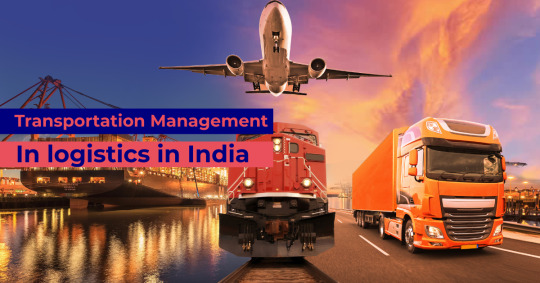
Transportation management in logistics in India is a critical function that determines the speed, cost, and reliability of supply chains across the country. With rising demand in sectors like e-commerce, retail, and manufacturing, the ability to move goods efficiently is no longer optional—it’s a necessity. As India continues to expand its infrastructure and embrace digital solutions, companies are increasingly focusing on transportation as a strategic asset.
Why Transportation Matters in Indian Logistics
India is a geographically diverse country, which makes transportation a complex but essential part of logistics. From metro cities to rural villages, goods must travel long distances through varying road and rail conditions. Poor transportation management can result in delivery delays, damaged goods, and cost overruns. That’s why businesses are adopting smarter strategies and technologies to manage transport operations more efficiently.
Core Modes of Transportation in Indian Logistics
Roadways
Road transport accounts for a large portion of freight movement in India. Trucks are commonly used for short- and mid-range deliveries, particularly in last-mile logistics. However, roadways often suffer from traffic congestion, toll charges, and maintenance issues that can hinder efficiency.
Railways
Railways offer an economical option for bulk and long-distance transport. The government’s investment in Dedicated Freight Corridors is improving the speed and reliability of this mode. It is particularly useful for industries like coal, steel, and agriculture.
Air Freight
Air cargo is the fastest method of transport and is widely used for high-value or perishable goods. Though it comes with higher costs, the reliability and quick turnaround make it essential for certain business verticals.
Waterways
India’s port network and inland waterways provide cost-effective solutions for transporting heavy cargo over long distances. With initiatives like the Sagarmala Project, the government aims to boost maritime logistics and reduce pressure on road and rail networks.
Technology’s Role in Transportation Management
Modern transportation management in logistics in India is being powered by technology. Companies are turning to digital tools to automate, monitor, and optimize their transportation workflows:
TMS (Transportation Management Systems): Manage freight operations, track deliveries, and optimize costs.
Real-time GPS Tracking: Enhances transparency and allows proactive response to delays or route issues.
AI and Data Analytics: Predicts delays, traffic patterns, and optimizes routes in real time.
Telematics and IoT: Collects data on vehicle health, driver behavior, and cargo conditions.
These innovations are enabling smarter, faster, and safer transportation systems.
Policy Support and Infrastructure Growth
To strengthen logistics capabilities, the Indian government is implementing key reforms and infrastructure projects:
Bharatmala Pariyojana: Expands highways and freight corridors.
Sagarmala Project: Develops ports and improves coastal logistics.
National Logistics Policy: Aims to create a unified, technology-driven logistics ecosystem.
Dedicated Freight Corridors: Increase the efficiency of goods transportation by separating it from passenger traffic.
Together, these initiatives are shaping a more connected and cost-effective logistics landscape.
Challenges in Transportation Management
Despite significant advancements, transportation management in logistics in India still faces a few roadblocks:
Varying infrastructure quality between urban and rural regions
Regulatory complexities and compliance costs
Fuel price volatility affecting operational budgets
Shortage of trained logistics professionals
Overcoming these challenges will be crucial to maintaining momentum and supporting India’s trade ambitions.
Conclusion
As logistics becomes a competitive differentiator in business, transportation management in logistics in India is emerging as a game-changer. With infrastructure investments, technological adoption, and policy support, the future of logistics in India looks promising. Companies that invest in efficient transport solutions today will be better positioned to serve customers tomorrow.
#transportation management in logistics in India#logistics#shipping#transportation#freightforwarding
1 note
·
View note
Text
What Future Trends in Software Engineering Can Be Shaped by C++
The direction of innovation and advancement in the broad field of software engineering is greatly impacted by programming languages. C++ is a well-known programming language that is very efficient, versatile, and has excellent performance. In terms of the future, C++ will have a significant influence on software engineering, setting trends and encouraging innovation in a variety of fields.
In this blog, we'll look at three key areas where the shift to a dynamic future could be led by C++ developers.
1. High-Performance Computing (HPC) & Parallel Processing
Driving Scalability with Multithreading
Within high-performance computing (HPC), where managing large datasets and executing intricate algorithms in real time are critical tasks, C++ is still an essential tool. The fact that C++ supports multithreading and parallelism is becoming more and more important as parallel processing-oriented designs, like multicore CPUs and GPUs, become more commonplace.
Multithreading with C++
At the core of C++ lies robust support for multithreading, empowering developers to harness the full potential of modern hardware architectures. C++ developers adept in crafting multithreaded applications can architect scalable systems capable of efficiently tackling computationally intensive tasks.

C++ Empowering HPC Solutions
Developers may redefine efficiency and performance benchmarks in a variety of disciplines, from AI inference to financial modeling, by forging HPC solutions with C++ as their toolkit. Through the exploitation of C++'s low-level control and optimization tools, engineers are able to optimize hardware consumption and algorithmic efficiency while pushing the limits of processing capacity.
2. Embedded Systems & IoT
Real-Time Responsiveness Enabled
An ability to evaluate data and perform operations with low latency is required due to the widespread use of embedded systems, particularly in the quickly developing Internet of Things (IoT). With its special combination of system-level control, portability, and performance, C++ becomes the language of choice.
C++ for Embedded Development
C++ is well known for its near-to-hardware capabilities and effective memory management, which enable developers to create firmware and software that meet the demanding requirements of environments with limited resources and real-time responsiveness. C++ guarantees efficiency and dependability at all levels, whether powering autonomous cars or smart devices.
Securing IoT with C++
In the intricate web of IoT ecosystems, security is paramount. C++ emerges as a robust option, boasting strong type checking and emphasis on memory protection. By leveraging C++'s features, developers can fortify IoT devices against potential vulnerabilities, ensuring the integrity and safety of connected systems.
3. Gaming & VR Development
Pushing Immersive Experience Boundaries
In the dynamic domains of game development and virtual reality (VR), where performance and realism reign supreme, C++ remains the cornerstone. With its unparalleled speed and efficiency, C++ empowers developers to craft immersive worlds and captivating experiences that redefine the boundaries of reality.
Redefining VR Realities with C++
When it comes to virtual reality, where user immersion is crucial, C++ is essential for producing smooth experiences that take users to other worlds. The effectiveness of C++ is crucial for preserving high frame rates and preventing motion sickness, guaranteeing users a fluid and engaging VR experience across a range of applications.

C++ in Gaming Engines
C++ is used by top game engines like Unreal Engine and Unity because of its speed and versatility, which lets programmers build visually amazing graphics and seamless gameplay. Game developers can achieve previously unattainable levels of inventiveness and produce gaming experiences that are unmatched by utilizing C++'s capabilities.
Conclusion
In conclusion, there is no denying C++'s ongoing significance as we go forward in the field of software engineering. C++ is the trend-setter and innovator in a variety of fields, including embedded devices, game development, and high-performance computing. C++ engineers emerge as the vanguards of technological growth, creating a world where possibilities are endless and invention has no boundaries because of its unmatched combination of performance, versatility, and control.
FAQs about Future Trends in Software Engineering Shaped by C++
How does C++ contribute to future trends in software engineering?
C++ remains foundational in software development, influencing trends like high-performance computing, game development, and system programming due to its efficiency and versatility.
Is C++ still relevant in modern software engineering practices?
Absolutely! C++ continues to be a cornerstone language, powering critical systems, frameworks, and applications across various industries, ensuring robustness and performance.
What advancements can we expect in C++ to shape future software engineering trends?
Future C++ developments may focus on enhancing parallel computing capabilities, improving interoperability with other languages, and optimizing for emerging hardware architectures, paving the way for cutting-edge software innovations.
10 notes
·
View notes
Text
Bluetooth Mesh Networking, Built for Scale – MeshTek
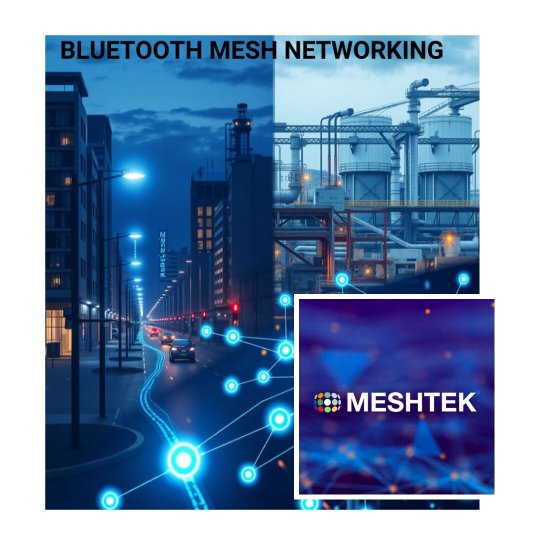
MeshTek brings you a next-gen Bluetooth Mesh Networking platform designed for massive scalability and real-world performance. Whether you’re managing smart street lighting or optimizing industrial automation, MeshTek delivers low-power, self-healing, and AI-enabled mesh connectivity that grows with your infrastructure. Trusted for secure, large-scale IoT deployments across smart cities and industrial ecosystems.
#BluetoothMeshNetworking#MeshTek#SmartConnectivity#IoTInnovation#SmartCitySolutions#IndustrialIoT#BluetoothTechnology#ScalableIoT#SmartLightingSystems#IoTNetworking#BLEMesh
1 note
·
View note
Text
Sound Recognition Market Disruption: How Audio Tech Is Taking Over IoT

Pioneering the Future of Sound-Driven Intelligence
The global sound recognition market is undergoing a rapid transformation, driven by the convergence of artificial intelligence (AI), machine learning (ML), and edge computing. As sound becomes a new frontier for data interaction, industries are leveraging sound recognition technologies to redefine safety, automation, and user experience. With an anticipated compound annual growth rate (CAGR) of 71.1% from 2024 to 2031, the sound recognition market is poised for exponential expansion across sectors such as security, healthcare, automotive, and smart living.
Request Sample Report PDF (including TOC, Graphs & Tables): https://www.statsandresearch.com/request-sample/40481-global-sound-recognition-market
Strategic Sound Recognition Market Dynamics and Growth Drivers
Surge in IoT and Edge AI Deployments
The proliferation of IoT devices has catalyzed the integration of sound recognition capabilities at the edge. Devices now possess the intelligence to locally process audio signals, minimizing latency and enhancing real-time responsiveness. This shift is crucial in applications such as smart homes and surveillance systems, where immediate sound-triggered actions are vital.
Advanced AI Algorithms Powering Accuracy
Modern sound recognition systems utilize deep neural networks trained on massive datasets to distinguish between a broad spectrum of audio inputs—ranging from verbal cues and environmental sounds to physiological indicators. The result is enhanced accuracy in noisy or variable acoustic environments, increasing the reliability of use cases in both consumer and industrial domains.
Get up to 30%-40% Discount: https://www.statsandresearch.com/check-discount/40481-global-sound-recognition-market
Application Ecosystem: Industry-Wise Impact
Automotive Safety and Autonomous Navigation
The automotive sector is at the forefront of sound recognition deployment. Vehicles are now equipped with advanced audio sensors capable of:
Detecting emergency vehicle sirens and alerting the driver.
Identifying fatigue in drivers through vocal strain patterns.
Enhancing autonomous vehicle decisions by interpreting contextual audio data.
These features contribute to proactive safety, aligning with global mandates for intelligent transport systems.
Smart Homes: Voice-Powered Automation
Smart home environments leverage sound recognition for seamless control and enhanced security:
Voice-activated assistants (e.g., Google Assistant, Alexa) manage daily tasks.
Devices detect abnormal sounds like glass breaking, smoke alarms, or intruders.
Integration with home automation platforms offers real-time alerts and system responses.
Healthcare and Fitness: Audio Biometrics in Patient Monitoring
Wearables and smart medical devices utilize sound recognition for health diagnostics:
Continuous cough and breath monitoring for chronic respiratory patients.
Detection of snoring and apnea events for sleep health.
Real-time alerts in eldercare environments upon identifying distress sounds.
The scalability of AI models allows personalized monitoring, transforming how care is delivered.
Security and Surveillance: Real-Time Threat Detection
In public infrastructure, commercial facilities, and urban surveillance systems:
Gunshots, screams, and explosion sounds are detected and classified.
Law enforcement and emergency services receive instant alerts with geolocation.
Sound analytics bolster visual surveillance systems, creating multi-sensory defense layers.
Device Integration: A New Paradigm of Smart Technology
Smartphones & Tablets
Devices now come preloaded with audio recognition features enabling:
Voice commands and smart assistants.
Emergency sound detection (e.g., crash or scream alerts).
Accessibility features for users with visual or motor impairments.
Smart Speakers & Home Devices
Core to the home automation ecosystem, these devices:
Act as central hubs for voice-controlled environments.
Respond to contextual commands (e.g., ambient noise level).
Detect unrecognized or alarming audio events.
Connected Cars & Hearables
Automotive and wearable tech continue to push boundaries:
Cars recognize external cues (e.g., police sirens, honks).
Hearables suppress ambient noise and isolate important cues.
Smart wristbands monitor user health via sound-derived insights.
Regional Insights: Global Sound Recognition Market Footprint
North America
As the most mature market, the region drives innovation through robust R&D and early tech adoption. The U.S. dominates in AI sound analytics, healthcare integration, and smart home devices.
Asia-Pacific
The fastest-growing region, fueled by consumer electronics manufacturing, urban infrastructure development, and rapid digitization. China, Japan, India, and South Korea are key contributors.
Europe
Home to regulatory-driven innovation in automotive and industrial IoT, with countries like Germany and the UK leading in autonomous and secure technology integration.
Middle East & Africa
Growing investment in smart cities and public safety systems is stimulating demand for AI-based surveillance and real-time monitoring solutions.
South America
Emerging adoption in urban security and healthcare applications, with Brazil leading the regional transformation.
Key Companies Shaping the Sound Recognition Landscape
Apple Inc. – Integrating sound recognition into iOS and health-focused wearables.
Audio Analytic – Pioneers in machine learning-based sound classification.
Analog Devices, Inc. – Providers of high-performance audio signal processors.
Renesas Electronics – Specialized in embedded systems with audio capabilities.
Wavio & Abilisense – Focused on environmental sound interpretation and accessibility solutions.
MicrodB & iNAGO Inc. – Innovators in industrial and consumer-grade acoustic intelligence.
These companies invest heavily in R&D, data annotation, and strategic partnerships to maintain competitive differentiation.
Sound Recognition Market Forecast and Future Outlook (2024–2031)
The sound recognition industry is expected to expand aggressively, with technological advancements, AI democratization, and cross-sector integration acting as primary enablers. From voice-first computing to environmental safety systems, sound will emerge as a principal interface for machine-human interaction.
Purchase Exclusive Report: https://www.statsandresearch.com/enquire-before/40481-global-sound-recognition-market
Conclusion
We are entering an era where sound recognition is not merely a feature, but a foundational layer of intelligent environments. Its fusion with AI and IoT is revolutionizing how machines perceive and respond to the world, making it an indispensable component across diverse sectors. Stakeholders investing in this transformative technology stand to gain not only competitive advantage but also contribute to a safer, more intuitive, and connected global ecosystem.
Our Services:
On-Demand Reports: https://www.statsandresearch.com/on-demand-reports
Subscription Plans: https://www.statsandresearch.com/subscription-plans
Consulting Services: https://www.statsandresearch.com/consulting-services
ESG Solutions: https://www.statsandresearch.com/esg-solutions
Contact Us:
Stats and Research
Email: [email protected]
Phone: +91 8530698844
Website: https://www.statsandresearch.com
1 note
·
View note